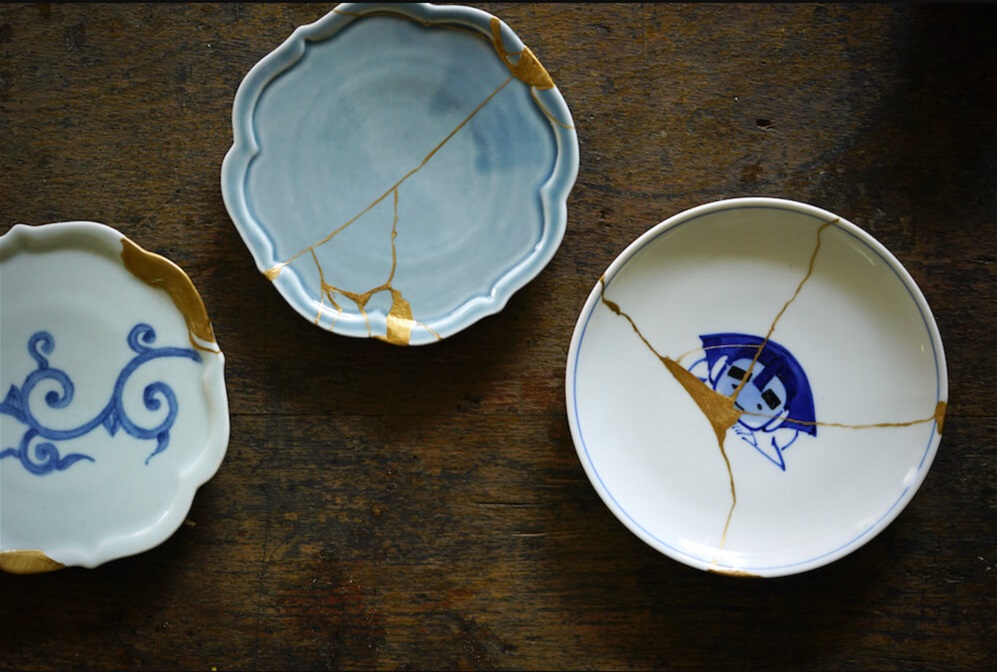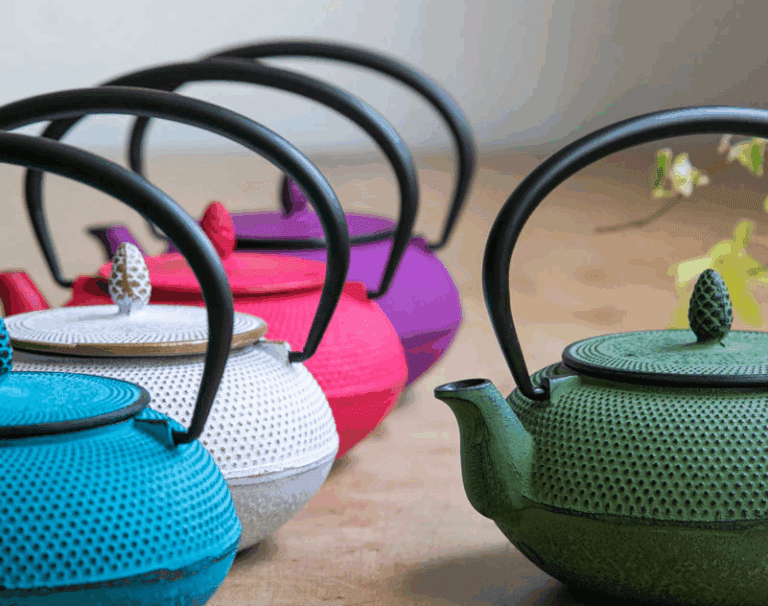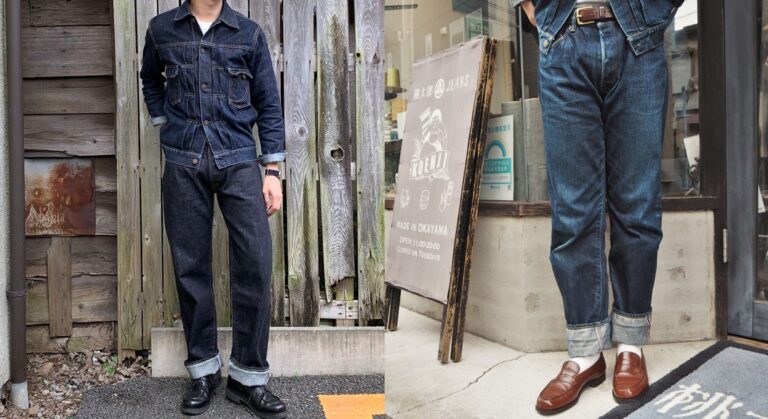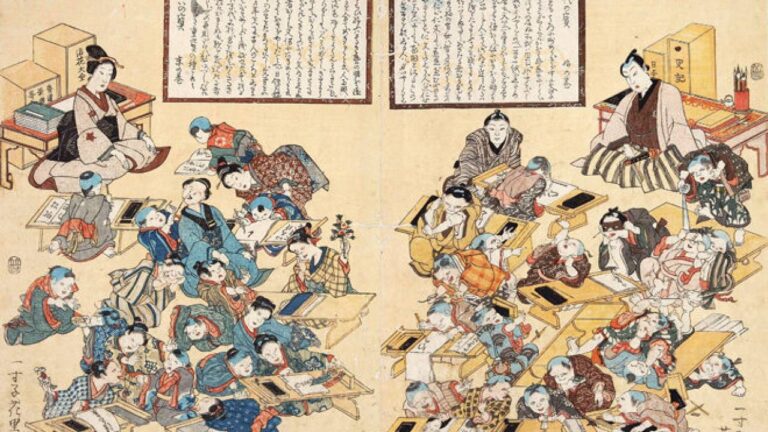Kintsugi: The Japanese Art That Mends With Gold—and Meaning
A History of Kintsugi: to Wabi-Sabi Philosophy
The practice of repairing ceramics in Japan dates back as far as the Jōmon period, where archaeological evidence shows early methods of mending broken pottery. However, what would later evolve into the technique we now call kintsugi began to take form in the late 12th century.
One famous early case involves a celadon tea bowl from the Chinese Longquan kilns, known today as the Bakōhan (馬蝗絆). According to historical records, this bowl was gifted to the Japanese noble Taira no Shigemori around 1175. It later came into the possession of Shogun Ashikaga Yoshimasa in the 15th century, by which time it had developed a crack. When Japan asked China for a replacement, they found that such fine celadon ware was no longer produced. Instead, the original bowl was returned with metal staples holding the crack together. Rather than lowering its value, this visible repair made the piece more precious—marking an important moment in Japan’s evolving repair culture.
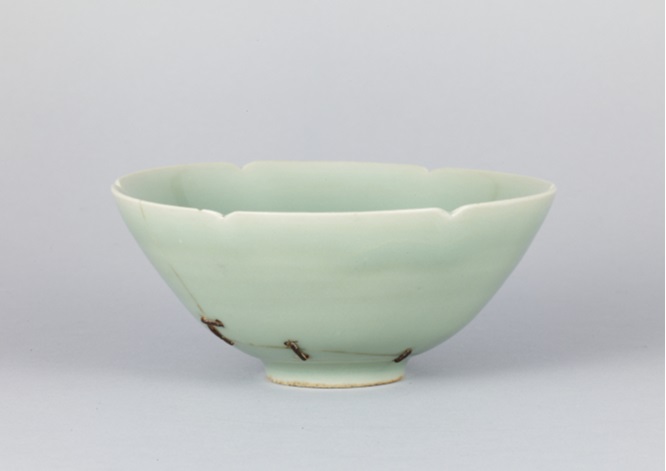
©Tokyo National Museum
Later, during the Azuchi–Momoyama period, the tea master Sen no Rikyū played a central role in shaping Japanese tea culture. Known as the spiritual father of modern tea ceremony, Rikyū rejected flamboyance in favor of subtlety and age. He found beauty in imperfection and history, often favoring chipped or weathered utensils—including kintsugi-repaired bowls—over flawless ones.

These values became central to what is now called wabi-sabi: an aesthetic that celebrates the transient, the incomplete, and the quietly profound.
Why Traditional Kintsugi Is Special
Traditional kintsugi is not just a method of repair—it’s a philosophy. Craftspeople use:
- Urushi (natural Japanese lacquer)
- Real gold or silver powder
- Rice flour paste, washi paper, and clay fillers
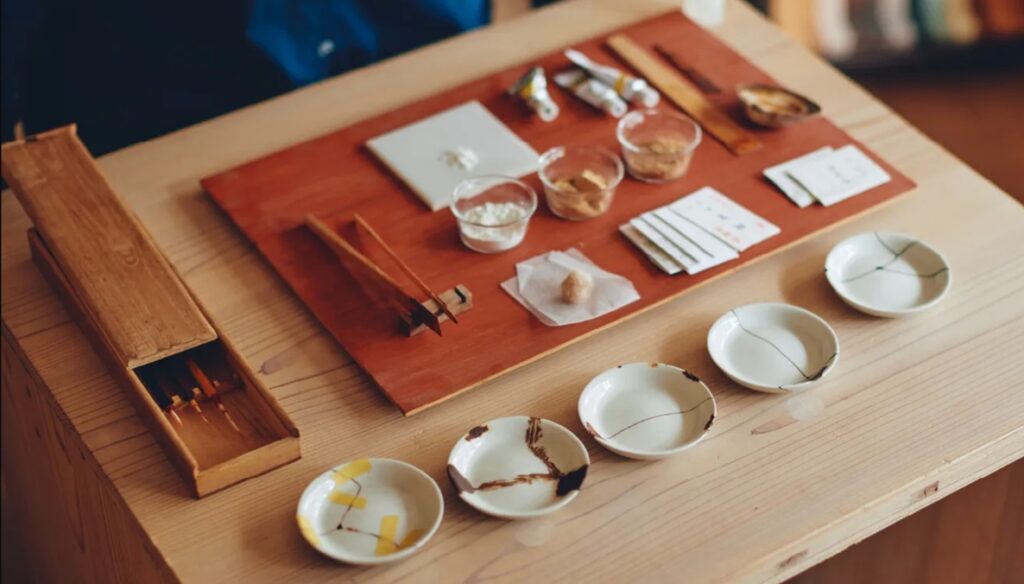
The process is delicate, time-consuming, and requires patience—sometimes taking weeks or even months to complete a single piece.
What makes it special isn’t just the beauty, but the story. Each golden seam becomes a visible trace of the object’s history, inviting reflection on time, care, and imperfection.
How Kintsugi Works: Tools, Steps, and Spirit
Here’s how traditional kintsugi usually unfolds:
- Cleaning the broken shards
- Bonding them with urushi and filler
- Drying (often in humidity-controlled boxes for several days)
- Polishing the seams
- Applying gold powder to the repaired areas
- Final sealing and finishing touches
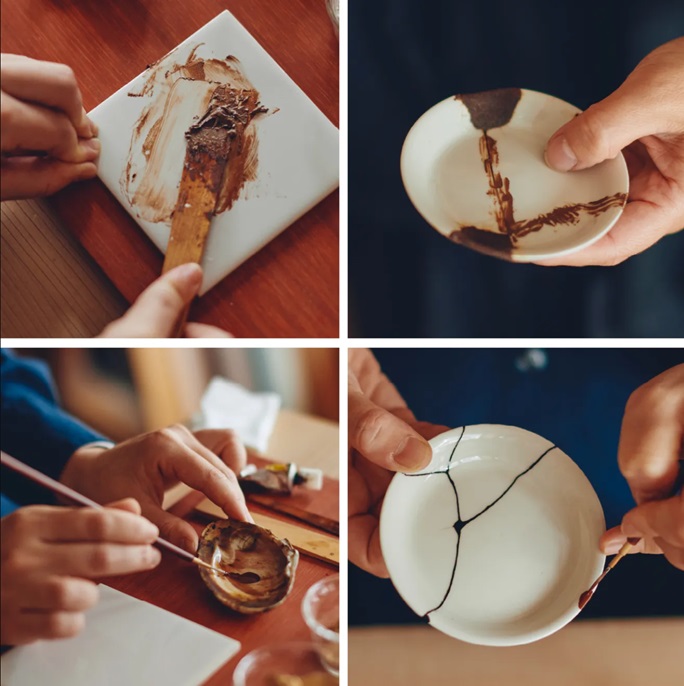
While these steps seem simple, each one demands skill and respect for the materials. The goal isn’t to hide damage—it’s to celebrate survival.
Modern Kintsugi: Easy, Accessible, and Still Meaningful
As kintsugi gained international attention, simplified versions emerged. These modern kits—popular on Amazon, Etsy, and art blogs—use epoxy resin instead of urushi, and gold-colored paint or powder in place of precious metals.
While they lack the longevity and depth of traditional kintsugi, they offer:
- Safety (no urushi allergy risk)
- Affordability
- Speed (some kits take under an hour)
- Artistic freedom (custom colors and patterns)
This “DIY kintsugi” is often treated as a form of therapeutic or symbolic art: a chance to connect with the idea of healing and beauty in damage.
Can You Use Kintsugi-Repaired Tableware Again?
Yes—but it depends on how it was repaired.
If your piece was restored using traditional urushi lacquer and meets modern food safety standards, it can absolutely be used again—as a dish, not just as decor.
In fact, in Japanese tea culture, even cracked and mended bowls are considered more meaningful because they carry stories. Sen no Rikyū, the legendary tea master, famously preferred such imperfect, well-used items over flashy new ones. For him, tools gained spiritual depth through use—not display.
This ties into a broader Japanese belief: everything, even tools and ceramics, can be imbued with spirit over time. It’s said that objects used and cherished for 100 years may come to house a kami—a spirit.
But what if your piece was repaired using modern DIY kits, like epoxy or paint?
In that case, it likely doesn’t meet food safety standards.
➡️ Our advice: don’t use it for food or drink.
Instead, these simplified repairs are better suited to decorative items, like ceramic figurines or keepsakes.
💡 Tip for international readers
Japanese households don’t usually match tableware into uniform sets. Plates, bowls, and cups are often mixed by material, season, or dish. Unlike the Western idea of symmetrical dining sets, beauty in Japanese cuisine often lies in contrast and imperfection—”—and kintsugi fits that perfectly.”
Join a Kintsugi Workshop in Japan
If you’re traveling to Japan, there are many kintsugi workshops that cater to English speakers—especially in Tokyo, Kyoto, and Kanazawa.
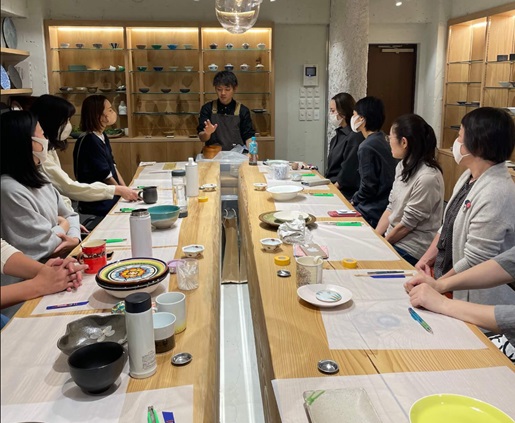
Participants can bring their own broken ceramics (or use provided pieces) and go through a simplified but meaningful repair process under professional guidance.
Workshops typically take 1–2 hours, and cost between ¥5,000–¥10,000. It’s a hands-on experience that doubles as a cultural souvenir.
More Than Repair—A Way of Seeing Beauty
Kintsugi teaches that brokenness isn’t the end. Instead, it’s an opportunity to begin a new chapter—one that honors both the flaw and the fix.
In a world overwhelmed by disposable culture, kintsugi offers an invitation to slow down, appreciate the imperfect, and build deeper connections with the things we choose to keep.
It’s not just repair.
It’s a way of seeing.

Editor and writer from Japan. Not the best at English, but I share real stories with heart and honesty — aiming to connect cultures and ideas that matter.

